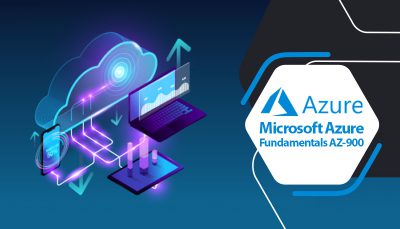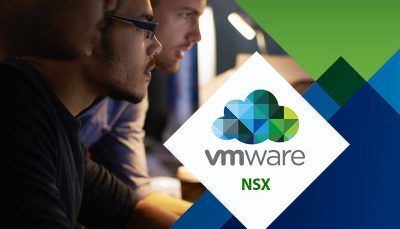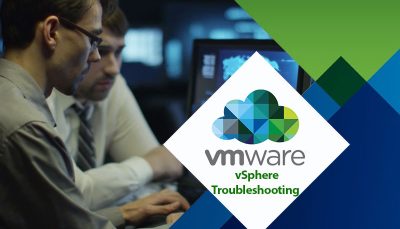Microsoft Azure Pack (AZ 900 + AZ 104 )
مدت زمان دوره: 90 ساعت
پیش نیاز دوره: ندارد
سرفصل دوره :
Microsoft Azure Administrator Associate (AZ-900):
Cloud Computing:
Define cloud computing
Describe the shared responsibility model
Define cloud models, including public, private, and hybrid
Identify appropriate use cases for each cloud model
The consumption-based model
Compare cloud pricing models
Describe server-less
The benefits of using Cloud Services:
High availability and scalability in the cloud
Reliability and predictability in the cloud
Security and governance in the cloud
Manageability in the cloud
Cloud Service types:
Infrastructure as a service (IaaS)
Platform as a service (PaaS)
Software as a service (SaaS)
Appropriate use cases for each cloud service (IaaS, PaaS, and SaaS)
The core architectural components of Azure:
Azure regions, region pairs, and sovereign regions
Availability zones
Azure datacenters
Azure resources and resource groups
Subscriptions
Management groups
The hierarchy of resource groups, subscriptions, and management groups
Azure compute and networking services:
Compare compute types, including containers, virtual machines, and functions
Virtual machine options, including Azure virtual machines
Azure Virtual Machine Scale Sets, availability sets, and Azure Virtual Desktop
The resources required for virtual machines
Application hosting options, including web apps, containers, and virtual machines
Virtual networking, including the purpose of Azure virtual networks, Azure virtual subnets, peering, Azure DNS, Azure VPN Gateway, and ExpressRoute
Define public and private endpoints
Azure storage services:
Compare Azure Storage services
Storage tiers
Redundancy options
Storage account options and storage types
Identify options for moving files, including AzCopy, Azure Storage Explorer, and Azure File Sync
Migration options, including Azure Migrate and Azure Data Box
Azure identity, access, and security:
Directory services in Azure, including Azure Active Directory (Azure AD), part of Microsoft Entra and Azure Active Directory Domain Services (Azure AD DS)
Authentication methods in Azure, including single sign-on (SSO), multi-factor authentication (MFA), and passwordless
External identities in Azure, including business-to-business (B2B) and business-to-customer (B2C)
Conditional Access in Azure AD
Azure role-based access control (RBAC)
The concept of Zero Trust
The purpose of the defense-in-depth model
The purpose of Microsoft Defender for Cloud
Cost management in Azure:
Factors that can affect costs in Azure
Compare the pricing calculator and the Total Cost of Ownership (TCO) Calculator
Cost management capabilities in Azure
Purpose of tags
Features and tools in Azure for governance and compliance:
Purpose of Microsoft Purview in Azure
Purpose of Azure Policy
Purpose of resource locks
Features and tools for managing and deploying Azure resources:
The Azure portal
Azure Cloud Shell, including Azure Command-Line Interface (CLI) and Azure PowerShell
The purpose of Azure Arc
Infrastructure as code (IaC)
Install & Configure Docker in Azure
Install & Configure Kubernetes Cluster in Azure
Azure Resource Manager (ARM) and ARM templates
Monitoring tools in Azure:
The purpose of Azure Advisor
Azure Service Health
Azure Monitor, including Log Analytics, Azure Monitor alerts, and Application Insights
AZ-104: Microsoft Azure Administrator
Manage Azure AD objects
- Create users and groups
- Manage licenses in Azure AD
- Create administrative units
- Manage user and group properties
- Manage device settings and device identity
- Perform bulk updates
- Manage guest accounts
- Configure self-service password reset
Manage access control
- Create custom role-based access control (RBAC) and Azure AD roles
- Provide access to Azure resources by assigning roles at different scopes
- Interpret access assignments
Manage Azure subscriptions and governance
- Configure and manage Azure Policy
- Configure resource locks
- Apply and manage tags on resources
- Manage resource groups
- Manage subscriptions
- Manage costs by using alerts, budgets, and recommendations
- Configure management groups
Implement and manage storage
Configure access to storage
- Configure network access to storage accounts
- Create and configure storage accounts
- Generate shared access signature tokens
- Configure stored access policies
- Manage access keys
- Configure Azure AD authentication for a storage account
- Configure storage encryption
Exam AZ-104: Microsoft Azure Administrator
Manage data in Azure storage accounts
- Create import and export jobs
- Manage data by using Azure Storage Explorer and AzCopy
- Implement Azure Storage redundancy
- Configure object replication
Configure Azure Files and Azure Blob Storage
- Create an Azure file share
- Configure Azure Blob Storage
- Configure storage tiers
- Configure blob lifecycle management
Deploy and manage Azure compute resources
Automate deployment of resources by using templates
- Modify an ARM template
- Deploy a template
- Save a deployment as an ARM template
- Deploy virtual machine (VM) extensions
Create and configure VMs
- Create a VM
- Manage images by using the Azure Compute Gallery
- Configure Azure Disk Encryption
- Move VMs from one resource group to another
- Manage VM sizes
- Add data disks
- Configure VM network settings
- Configure VM availability options
- Deploy and configure VM scale set
Create and configure containers
- Configure sizing and scaling for Azure Container Instances
- Configure container groups for Azure Container Instances
- Create and configure Azure Container Apps
- Configure storage for Azure Kubernetes Service (AKS)
- Configure scaling for AKS
- Configure network connections for AKS
- Upgrade an AKS cluster
Exam AZ-104: Microsoft Azure Administrator
Create and configure an Azure App Service
- Create an App Service plan
- Configure scaling settings in an App Service plan
- Create an App Service
- Secure an App Service
- Configure custom domain names
- Configure backup for an App Service
- Configure networking settings
- Configure deployment settings
Configure and manage virtual networking
Configure virtual networks
- Create and configure virtual networks and subnets
- Create and configure virtual network peering
- Configure private and public IP addresses
- Configure user-defined network routes
- Configure Azure DNS
Configure secure access to virtual networks
- Create and configure network security groups (NSGs) and application security groups (ASGs)
- Evaluate effective security rules
- Implement Azure Bastion
- Configure service endpoints
- Configure private endpoints
Configure load balancing
- Configure Azure Application Gateway
- Configure an internal or public load balancer
- Troubleshoot load balancing
Monitor virtual networking
- Monitor on-premises connectivity
- Configure and use Azure Monitor for networks
- Use Azure Network Watcher
- Troubleshoot external networking
- Troubleshoot virtual network connectivity
Monitor resources by using Azure Monitor
- Configure and interpret metrics
- Configure Azure Monitor Logs
- Query and analyze logs
- Set up alerts and actions
- Configure monitoring of VMs, storage accounts, and networks by using VM insights
Implement backup and recovery
- Create an Azure Recovery Services vault
- Create an Azure Backup vault
- Create and configure backup policy
- Perform backup and restore operations by using Azure Backup
- Configure Azure Site Recovery for Azure resources
- Perform failover to a secondary region by using Azure Site Recovery
- Configure and review backup reports










دیدگاهها
هیچ دیدگاهی برای این محصول نوشته نشده است.